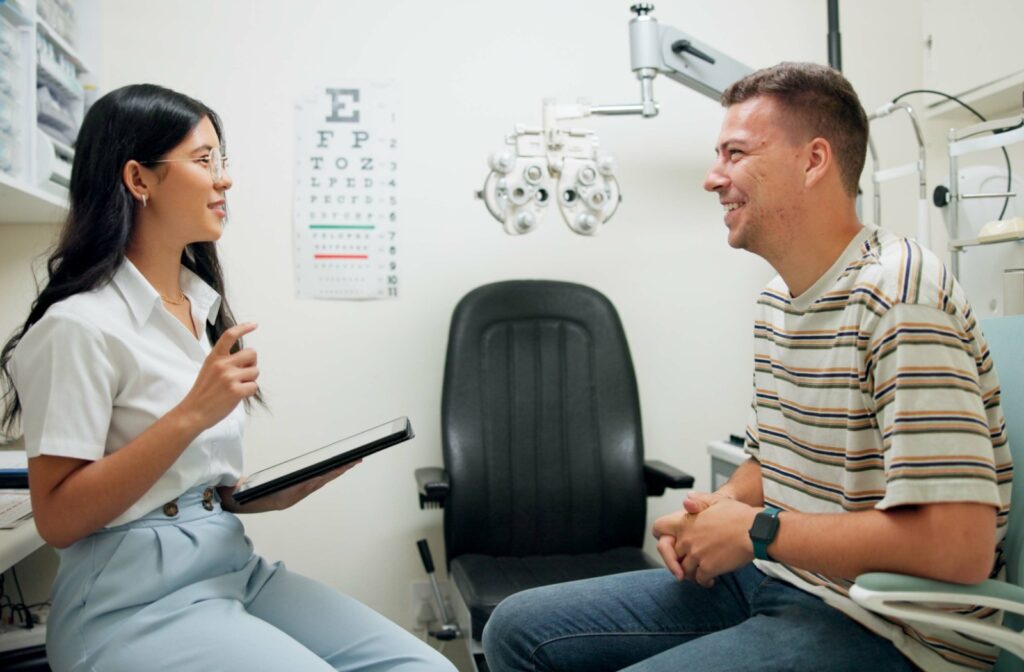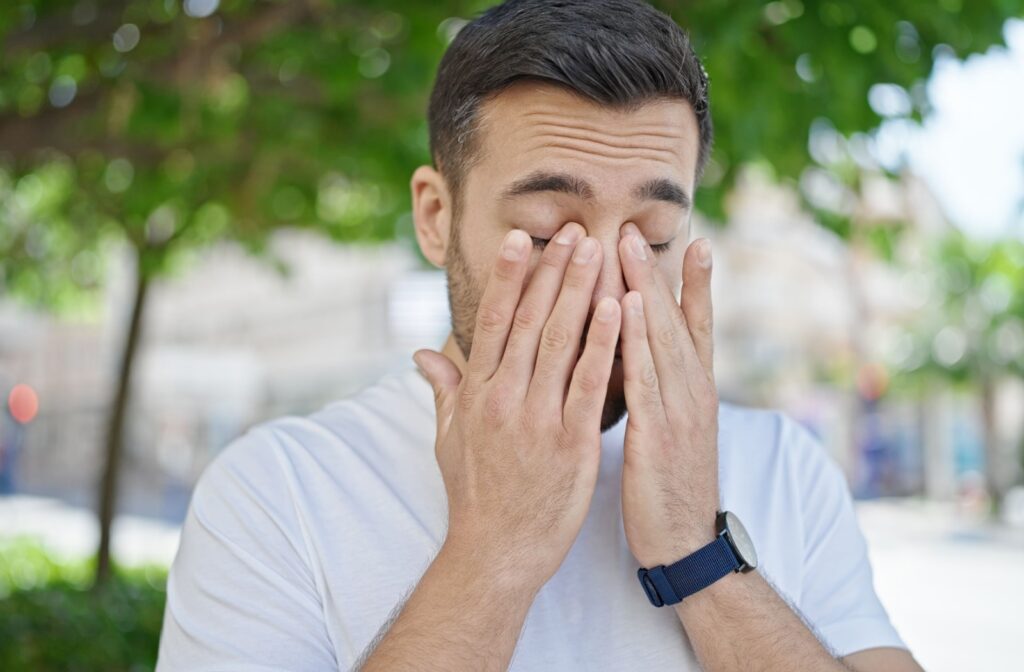Dealing with dry eye disease can be incredibly frustrating. It can feel like you’ve tried every possible solution with little to no relief. But there’s a new approach on the horizon. Low-level light therapy (LLLT) is an innovative treatment that applies light around the eyes to unclog glands and relieve dry eye disease symptoms.
What Exactly Is Low-Level Light Therapy?
Low-level light therapy, or LLLT, uses specific wavelengths of light to stimulate cells and promote healing. Unlike high-intensity treatments, LLLT involves low-energy light penetrating the skin without causing heat or damage. Initially used for wound healing and pain relief, it’s now gaining attention for its potential to treat dry eye disease.
The light used in LLLT is usually red or near-infrared and penetrates deep into tissues, reaching areas that other treatments might miss. The goal is stimulating cellular activity, reducing inflammation, and enhancing tissue repair, meaning fewer symptoms and a better quality of life for dry eye disease sufferers.
How Does Low-Level Light Therapy Differ from IPL Treatment?
Intense pulsed light (IPL) therapy is another light-based treatment for dry eye disease. While both IPL and LLLT use light to improve eye health, they operate differently. IPL uses high-intensity light pulses to target blood vessels and reduce inflammation. It’s often used to treat rosacea and other skin conditions that can contribute to dry eye disease symptoms.
In contrast, LLLT uses low-energy light that penetrates deeper into tissues. It’s more focused on stimulating cellular activity and promoting gland function. Because of its gentler approach, LLLT can be a more suitable option for individuals with sensitive skin or those who haven’t responded well to IPL.
How Does Low-Level Light Therapy for Dry Eye Disease Work?
LLLT works by targeting the meibomian glands in your eyelids. These glands produce the oily layer of your tears, which helps keep your eyes lubricated. When these glands become clogged or dysfunctional, they lead to symptoms like burning, itching, and redness.
The light used in LLLT helps stimulate these glands, promoting better oil production and secretion. This, in turn, helps improve the overall quality of your tears and reduces dryness. The treatment can also reduce inflammation, another critical factor in dry eye disease. LLLT offers a comprehensive approach to managing symptoms by addressing both gland function and inflammation.
Are There Side Effects?
One of the biggest concerns with any treatment is the potential for side effects. Fortunately, LLLT has a good safety profile. Most people tolerate the treatment well, with few adverse reactions. Commonly reported side effects, including slight redness or warmth in the treated area, are typically mild and temporary. Since LLLT doesn’t use high-intensity light, there’s no risk of burns or significant skin damage.
However, consulting with a healthcare professional before starting any new treatment is essential. They can help determine if LLLT is appropriate for your situation and guide you through the process.
Does Low-Level Light Therapy Help with Other Conditions?
While LLLT is gaining traction for dry eye disease, its benefits can extend beyond ocular health. The therapy has been used successfully for a variety of conditions, including:
- Wound healing and reducing scar formation.
- Pain relief for conditions like arthritis, tendonitis, and neuropathy.
- Hair growth for individuals with thinning hair or alopecia.
- Skin rejuvenation, improving skin texture and reducing signs of aging.
These additional benefits make LLLT a versatile treatment option, offering potential relief for various health concerns.

What Does a Low-Level Light Therapy Session Look Like?
Before starting LLLT, you’ll typically consult a healthcare provider. During this meeting, they’ll review your medical history, examine your eyes, and discuss your symptoms to help make sure that LLLT is the right treatment for you.
Before your session, you might be asked to remove contact lenses and avoid using eye makeup. Your provider will explain what to expect during the treatment and answer any questions.
During Low-Level Light Therapy
During the session, you’ll be seated comfortably, and protective goggles are placed over your eyes to shield them from the light. The therapist uses a specialized device to deliver the low-level light to your eyelids. The process is painless and typically takes about 15-30 minutes.
You’ll feel a gentle warmth as the light penetrates your skin and stimulates the meibomian glands. Many people find the experience relaxing. Once the session is complete, you can return to your regular activities immediately. There’s no downtime, making it a convenient option for busy individuals.
After a Low-Level Light Therapy Session
After your LLLT session, there are a few simple precautions to remember. For a few hours, avoid direct sunlight and harsh environmental conditions. This helps protect your eyes and allows the treatment to work effectively. Wearing sunglasses can provide added protection.
You might experience mild redness or warmth in the treated area, but this should subside quickly. Contact your healthcare provider if you have any concerns or experience unusual symptoms. Following their post-treatment instructions is important for the best possible outcome.
How Many Treatments Do I Need?
The number of LLLT sessions needed varies depending on the severity of your dry eye disease and your response to the treatment. Many start with 4-6 sessions spaced a few weeks apart. Your healthcare provider will create a personalized treatment plan based on your needs.
Regular maintenance sessions might be recommended to sustain the benefits. These could be scheduled monthly or quarterly, depending on your symptoms. Consistency is critical to achieving long-term relief from dry eye disease.
Is Low-Level Light Therapy for You?
West Valley Dry Eye knows that customized treatment plans offer patients more access to relief from dry eye disease. Our dedicated team is here to support you every step of the way, monitoring your progress and making adjustments as needed for optimal results. Contact us today to see if low-level light therapy could be a solution for you.


